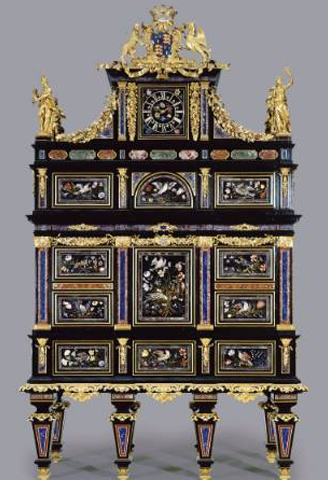TO MOST people, the Badminton Cabinet may well just look like a large and fantastically ornamental chest-of- drawers. The most splendid eighteenth- century cabinet in existence, the most ostentatious reposi-tory of ducal socks ever made - but is it really an object of major cultural significance?
The question is of more than academic importance. The Badminton Cabinet is the first object of a Na-tional Art Collections Fund National Appeal for almost 30 years. pounds 8,697,000 is needed to prevent it from becoming a conspicuous topic of conversation in the New Jersey mansion of Mrs Barbara Piasecka Johnson, the Johnson & Johnson's baby powder heiress who bought it at Christie's last July. The last ex-port-threatened object that the NACF deemed to be of equivalent worth was the Leonardo Cartoon, which the nation acquired in 1962. Few would contest the desirability of saving the Leonardo, but the Badminton Cabinet? Until it was sold, hardly anyone had even heard of it. The world's most expensive piece of furniture goes on display at the British Library today. Cabinet discussion is called for.
In fact, a reasonable case can be made for it. It is an object as heavily freighted with political, intellectual and aesthetic significance as it is with gilt, ormolu and lapis lazuli. The trouble is that the audience for art has largely lost the means to decipher the statements made by such an object. What follows is an attempt to unlock the Badminton Cabinet.
More than one key will be required. The first is some knowledge of the man who commissioned it. He was Henry, the third Duke of Beaufort, a wealthy English aristocrat. In 1726, when he was 19, he left England on the young nobleman's obligatory trip to mainland Europe, the Grand Tour. In Rome he bought enough paintings to...


